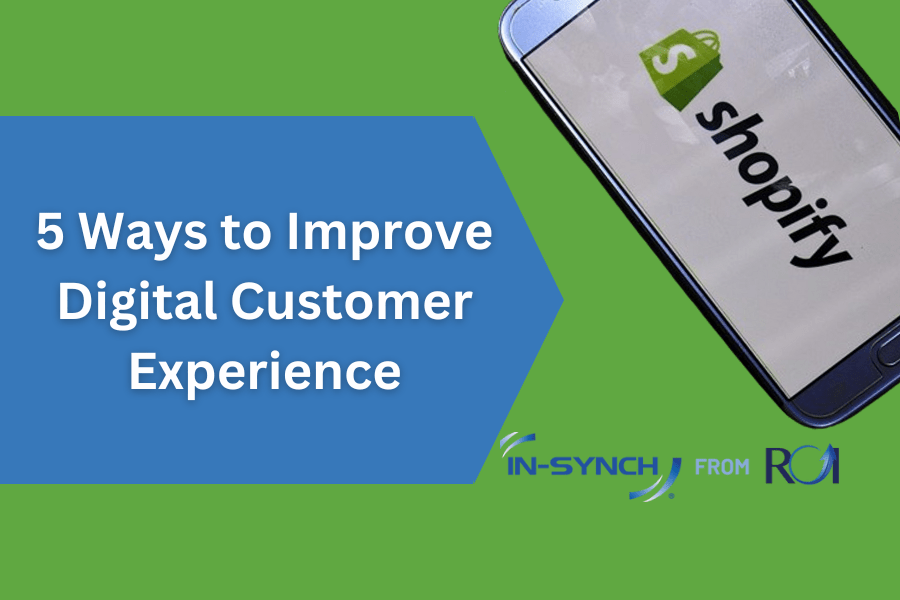By Ruth Richter • October 10, 2018
Almost two years ago, in September 2016, global annual internet traffic surpassed one zettabyte, or 1021 bytes. (Source: Cisco) That’s like 150 years of high-definition video. And while it took 40 years to reach that volume of traffic, it is estimated that within the next four years, data traffic will double. This should be fantastic news for growing businesses: The emergence and growth of the internet has drastically changed how companies sell to and interact with their customers.
But in an age where eight out of 10 Americans shop online—with more than one-third of total retail sales in the U.S. coming from a smartphone—how can your business maintain a customer-centric approach when you don’t actually see any of your customers in person?
Being Customer-Centric Means being Data-Centric
The positive side of so many transactions occurring through computers and mobile devices is the massive trail of data those transactions and interactions create. By the time a purchase is complete, you have access to a customer’s name, email, phone number, and address, perhaps even with the permission to continue contacting them with information on sales and special offers.
The challenge is that customers expect the same access to data in return. The rise of internet shopping, which can be done any time day or night, means that customers expect companies to be available on those same timeframes to serve their needs. Without seamless information on products and services, customers may take their business elsewhere. Thus, the businesses with the larger growth potential will be those who have adopted a data-centric approach along with their customer-centric focus.
Being customer-centric goes hand in hand with being data centric. Indeed, big data can be assembled to inform companies about all the different types of customers they have: what they like, what they value, how long they’ve been a customer and what that has meant to the company’s bottom line. Customer satisfaction is the backbone for the business’ certainty, and the best customer satisfaction results come from gathering and using as much information on those customers as possible.
Why You Need a Data Strategy
If managing data is critical to a company’s success, why are so many organizations behind the curve on doing so? According to Harvard Business Review, less than half of structured data is actively used in decision-making processes. Worse, less than 1 percent of unstructured data is analyzed or used at all. Without a data strategy, it is a challenge to protect and leverage data. Superior data management will support decision making, enhance financial process, and yes, improve your customer-centric actions. All of which in turn will position your organization for continual growth.
While a lot of data will flow into your systems from customer interactions, three specific kinds can directly influence customer outcomes.
- Traditional: Any details pertaining to the customer’s interactions with your company. This data tells you how customers use or plan to use your products. It is typically stored in a CRM system.
- Social: Insights from social networking gives you access to real-time feedback that will help your organization better understand your customers. Social data insights must be unified with traditional data for more powerful results.
- Demographics: This data provides a broader view of customers, rather than the specific focus of traditional or social data. Demographic data provides information on general needs as related to age, location, or other specified characterizations. Pairing this data with traditional and social will uncover deeper information about customer needs and/or how they use your product.
The Power of Integrated Data
But all that data doesn’t do your company any good if it’s inaccessible to those across the organization who need it. Integrating data housed in a centralized location—such as Sage 100cloud—enables teams to arrange it holistically to gain the most value and insight from it in real time.
Keeping data free-flowing is a simple matter of proper integration. Sage 100 has the capability to integrate with ecommerce carts and third-party marketplaces. Even when a customer is purchasing your product from an ecommerce platform such as Amazon, eBay, or Shopify, both the traditional data of their purchasing information and the social data gleaned from their online shopping process along with demographics parsed from their location and age range are organized and flow into Sage 100. Suddenly your company has access to data not only to send out the product order but gain a deeper understanding of the customers you serve. That deeper understanding leads to more accurate targeting, increased sales, and ultimately measurable growth for your business.
Data is More Critical than Ever
Data began as critical to only back-office processes, such as accounting and payroll. Today’s technological advances, however, place data squarely in the center of business, and its proper and strategic management has become vital to the success of an organization. The right data strategy could very well mean the difference between growth and closing shop.
—
ROI Consulting is the market’s leading ecommerce solution and Sage 100 integration specialist, maximizing Sage 100 customer’s technology investment through integration and customization since 1997. Learn more about ROI’s integration solutions for Sage 100 at www.roi-consulting.com or by calling Ruth Richter at 402-934-2223×1.




